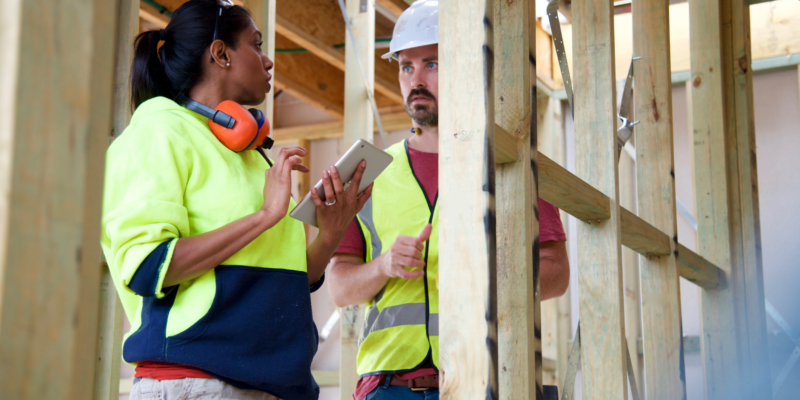The average person spends 90,000 hours at work, or approximately ⅓ of their lifetime, and most leaders want that time to be pleasant for our employees.
While competitive wages and benefits are the first step in employee retention, with today’s labor shortages and changing society, it’s more important than ever to keep staff satisfied. Happier workers tend to take fewer sick days, make better teammates, and are more productive. Plus, finding, hiring, and training new employees takes valuable time and money, especially during busy seasons.
While no employer can guarantee perfect weather, zero setbacks, and completely united crews all the time, there are several things leaders can do to make workers happier and, ultimately, keep them longer.
1. Safety First
Safety of your employees should always be your top priority. It may be tempting to relax safety procedures and cut corners, but doing this subtly tells workers that you don’t care about their health and wellbeing. Make sure they have all of the protective equipment they need and they know how to use it.
2. Maintain Equipment
Nothing decreases morale like having poorly-maintained equipment. Investing in quality, up-to-date tools, materials, and equipment will keep your staff safer and more comfortable, improve work speed, and give your employees the literal tools they need to take pride in their work. This also includes using new technology (drones, AI, and productivity management software, for example) that can help your team become more efficient and learn new things.
3. Cultivate the Culture
Whether you call it culture, feeling, or atmosphere, the general vibe around the workplace needs to remain positive. This doesn’t mean you have to be hyper upbeat or micro-manage; it just means making sure your values and mission are reflected in their work and attitude. Everyone, from general laborers up to the CEO, should feel respected and heard. Make sure your management is supportive, professional, and invested in creating a team atmosphere..
4. Be Flexible
For most employees, work isn’t their whole life. Ask staff what they want, truly listen to their responses, and promote a healthy work/life balance. This might look like working 4/10s instead of 5/8s (which has been shown to boost productivity, and gives staff an extra day to recharge), or providing more time off during the holidays for staff to spend with their families and friends. If you do have staff working nights, weekends, and/or holidays, compensate them well!
5. Appreciate Your Crew
This one might be obvious, but a little bit of appreciation goes a long way to keeping staff. Get to know your staff, and find out what they like. Simple shout-outs, the occasional worksite meal, and holiday bonuses are fairly inexpensive ways to let your people know you appreciate them. Your workers should never feel like they’re just a number or disposable. Once they do, they’ll start thinking of their employer as replaceable, too.
6. Provide a Path for Growth
Careers keep people, dead-end jobs do not. Make sure your staff have a clear path for advancement. Develop in-house training programs and offer opportunities to learn new equipment and technologies. Whenever possible, promote internally and show existing staff that they can move into leadership positions if they stay with your company.
Steadfast Enterprises, LLC, prides itself on providing quality staffing and equipment to developers, project managers and general contractors across the country. We’re proud to employ expert operating engineers who are safe, productive, and efficient, and to offer modern, up-to-date equipment that uses industry leading technology. Let us help you complete your project today! Click here for staffing support or check out our equipment rentals here.




